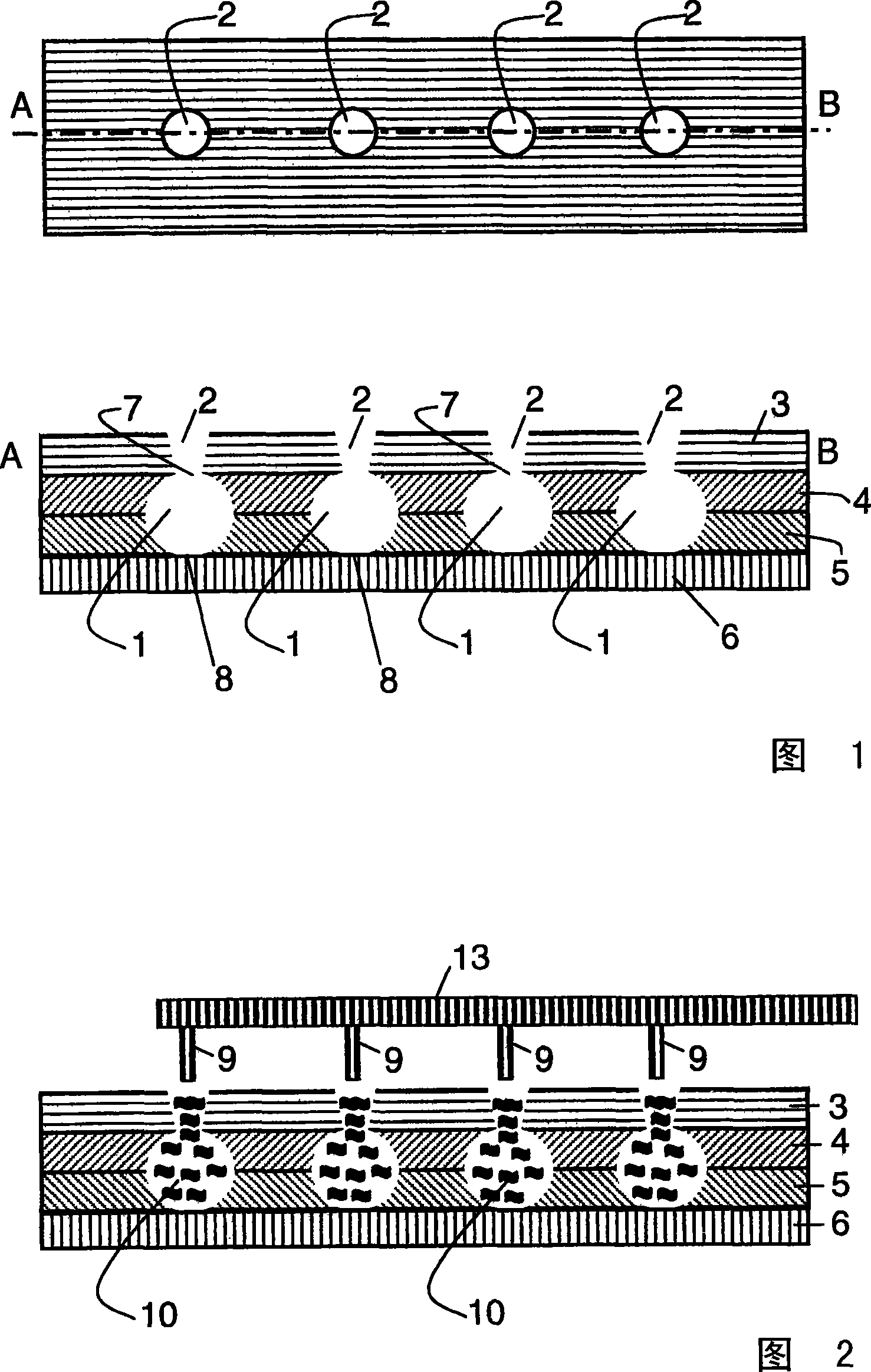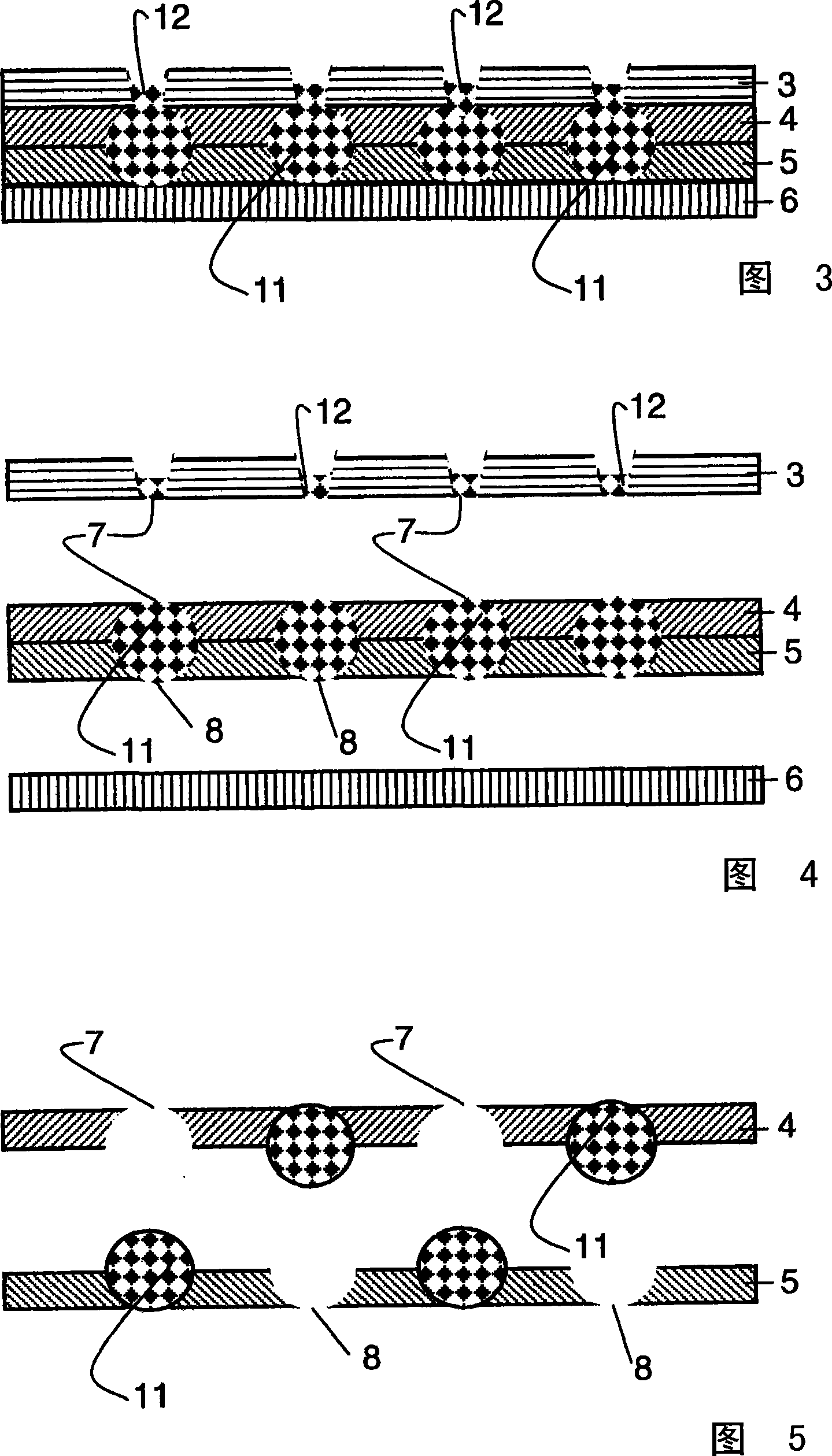Method and mould for manufacturing pellets of hot-melt ink
A technology of hot melt ink and mold, applied in printing and other directions, can solve problems such as increasing cost
- Summary
- Abstract
- Description
- Claims
- Application Information
AI Technical Summary
Problems solved by technology
Method used
Image
Examples
Embodiment Construction
[0024]Figure 1 is a top view and a cross-sectional view along line AA' of a multi-mold having a plurality of cavities and a plurality of corresponding filling holes. To illustrate multiple molds and mold methods, four mold cavities 1 and four corresponding filling holes 2 are shown. The multi-mold consists of four dies that are fastened but also detachably joined to each other by connecting means such as screws (not shown). In practice, hundreds or thousands of cavities may be provided. All four molds have a general box shape and are made of steel. Other metals, such as aluminum, may also be used. Other materials, such as plastics, can also be used as long as they have high thermal conductivity and can withstand temperatures up to 150° C. without deformation. A flat conical perforation is provided in the first mold 3 . These perforations are referred to as filling holes 2 . The filling hole has its smallest dimension at the interface with the second mold, which defines th...
PUM
| Property | Measurement | Unit |
|---|---|---|
| melting point | aaaaa | aaaaa |
Abstract
Description
Claims
Application Information
 Login to View More
Login to View More - R&D
- Intellectual Property
- Life Sciences
- Materials
- Tech Scout
- Unparalleled Data Quality
- Higher Quality Content
- 60% Fewer Hallucinations
Browse by: Latest US Patents, China's latest patents, Technical Efficacy Thesaurus, Application Domain, Technology Topic, Popular Technical Reports.
© 2025 PatSnap. All rights reserved.Legal|Privacy policy|Modern Slavery Act Transparency Statement|Sitemap|About US| Contact US: help@patsnap.com



